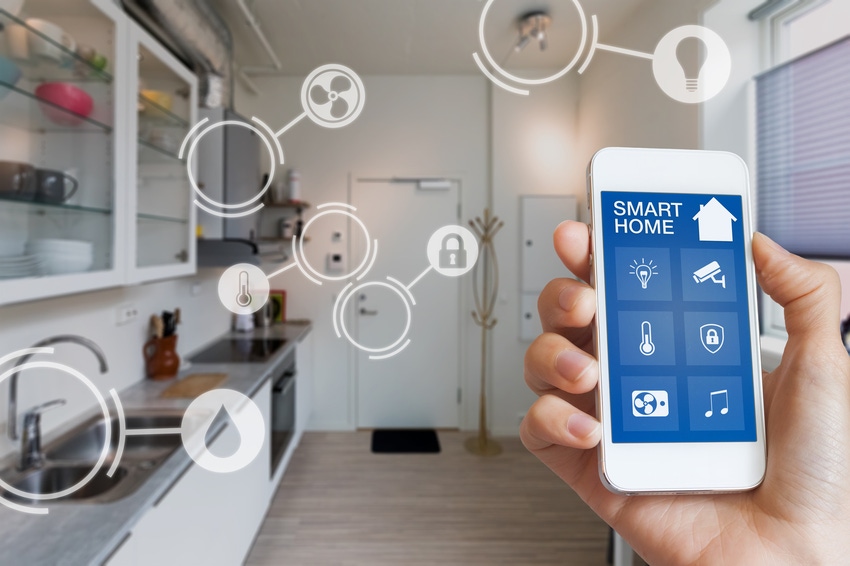USP is a standardized protocol for managing, monitoring, upgrading, and controlling connected devices.
October 5, 2022

Telecoms.com periodically invites expert third parties to share their views on the industry’s most pressing issues. In this piece Daniel Egger, Principal Software Engineer at Axiros and Leader of the “BUS Data Modeling” project stream at Broadband Forum, explores the latest technological developments in the connected home sector.
Originating from the COVID-19 pandemic, home offices have become fashionable and working from home is now the norm, placing increased demand on the connectivity in the home. The number of connected devices continues to climb, evolving the managed connected home ecosystem which is supplying service providers with a unique opportunity to monetize emerging technologies for end-users. For the customer to take full advantage of the abundance of new connected devices that are being brought into the home, they need to experience seamless connectivity.
The interconnection and interoperability of multiple devices, services, and apps, ranging from security to home automation and entertainment, is essential to deriving value from the connected home. Standardizing the connected home offers a number of benefits to operators, consumer electronics manufacturers, and application providers, creating an interoperable ecosystem that is easy and effective to manage.
The challenges of the connected home
One of the main challenges operators face in managing the connected home is the wide spectrum of devices it brings. Consumers are increasingly expectant of their service providers to deliver on the concept of the smart home, whilst at the same time guaranteeing reliable, fast broadband services. Many of these devices need to be remotely controlled and managed. Broadband Service providers are experiencing rising pressure, as they do not only need to integrate the concept of the smart home to satisfy customer demands. They also need to implement a compelling business strategy for themselves to take advantage of this ecosystem.
The Internet of Things (IoT) enhanced connected home presents service providers with unparalleled opportunities and challenges. The number of IoT devices worldwide is forecasted to almost triple from 9.7 billion in 2020 to more than 29 billion in 2030. As the COVID-19 pandemic prevented social activity outside, people began to take up hobbies and interests indoors. So, not only has remote working introduced new devices to the home, but the rise of the likes of Virtual Reality, Artificial Intelligence and Augmented Reality are also becoming more embedded in the services and applications that are used inside the home. Now is the time to rethink how the broadband experience is delivered and measured in homes and businesses.
The evolution of TR-069 to USP (TR-369)
With one billion installations worldwide, TR-069 is at the heart of a profound industry evolution to holistic broadband, fostering the broadband ecosystem we know today. This is largely responsible for creating the mass market that stimulated broadband innovation and subscriber adoption.
TR-069 is a technical specification that defines an application layer protocol for remote management and provisioning of customer-premises equipment connected directly to the Internet. However, due to the rise of the likes of IoT devices, smart Wi-Fi, set-top boxes, and smart gateways in the home, the consumer electronics industry needs a way to bootstrap, upgrade, manage, and monitor this new world of connected devices inside the home network.
New and up-to-date standardized protocols have been introduced, such as TR-369 or User Service Platform (USP), to respond to the rapidly growing needs and demands of the connected world. USP co-exists with and represents the natural evolution of TR-069 as it offers an easy migration path for those that wish to introduce it into new and existing environments.
USP: Facing the challenges
USP is a standardized protocol for managing, monitoring, upgrading, and controlling connected devices. The specification creates a real opportunity for operators to take advantage of the latest technologies that enable end-user connectivity, applications, and services.
This is achieved by offering a system of controllers and agents that enables effective remote manipulation of software and hardware capabilities. USP has been designed and specified by many service providers and vendors around the world, leveraging the long time experience of deployments and managed services in complex network environments. Bringing both benefits and challenges, service providers must evolve how the broadband experience is measured and delivered both in the home and for business to potentially monetize the connected home.
Operators want to understand the quality of experience being provided to their subscribers as it costs more money to secure a new customer than it takes to keep an existing one. USP allows to efficiently collect the required data to determine the offered quality. Once the data has been collected, operators can then analyze and act on that data. A scalable platform based on open standards, supported by open-source reference implementations and developed in cooperation with other standards bodies is critical in addressing the pain point of Wi-Fi and service quality as observed in over-the-top applications. A specification that can address these challenges, and is transport agnostic, meaning that it can be accessed at any location on any device, no matter the network, is paramount.
With enhanced security, flexibility, and network efficiency, operators can enable multiple applications to control, onboard, and manage end-user devices. The empowered platform for developing applications can improve the network, provide new services, and utilize the connected devices in the connected home.
Monetizing the connected home
If the connected home market is to be monetized by service providers, it is vital that they are able to seamlessly migrate and evolve their systems with technologies on the market, such as those introduced by consumer electronics companies. While many companies may offer vertical solutions of their own, proprietary solutions lock providers and users into a stunted ecosystem and may limit the market for operators. It is only through interoperability that the door can be opened to new use cases essential in addressing the rising consumer demand and expectations, such as Wi-Fi management, network security, parental control, and home automation.
Service providers are uniquely placed to deliver this proactive management of the home network. With a suitable standardized protocol, remote manipulation of software and hardware capabilities can be enabled. Revolutionized standards can also reduce the number and size of messages sent across the network as well as remedy connectivity challenges, as it provides always-on communications.
As the broadband home router is standard equipment for any subscriber, it serves as a central point for connectivity and network security in the home. This means that service providers can act as a centralized service center that manage other services with a single point for billing and customer support, simplifying a complex environment for the end-user which can, in turn, improve users’ overall experience.
Wi-Fi connectivity and the promise of the smart home presents a great opportunity for service providers to offer premium services, such as network security monitoring, IoT integration and support, and Wi-Fi quality management.
Newly evolved device management protocols are providing comprehensive long-term options that balance the needs of the customer and the service provider. Operators need the confidence to deploy their products, for trusted and efficient implementations in the years ahead. For mass deployment to be realized, a unified, interoperable, and standardized platform to develop value-add solutions for the connected home is needed.
 Daniel Egger is a Principal Software Engineer at Axiros GmbH and a Program Stream Lead for Data Modelling within the BUS Work Area of the Broadband Forum. He is an evangelist for, a contributor to, and promoter of good and usable standards.
Daniel Egger is a Principal Software Engineer at Axiros GmbH and a Program Stream Lead for Data Modelling within the BUS Work Area of the Broadband Forum. He is an evangelist for, a contributor to, and promoter of good and usable standards.
Read more about:
DiscussionAbout the Author(s)
You May Also Like








.png?width=300&auto=webp&quality=80&disable=upscale)


_1.jpg?width=300&auto=webp&quality=80&disable=upscale)


.png?width=800&auto=webp&quality=80&disable=upscale)